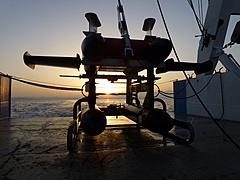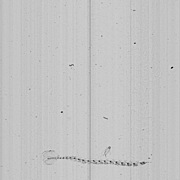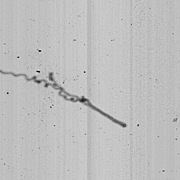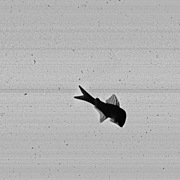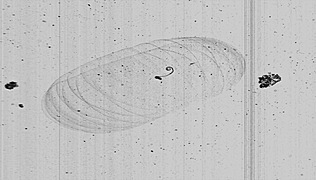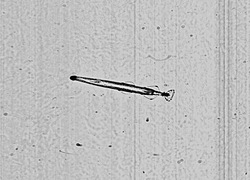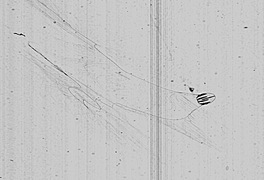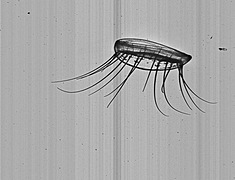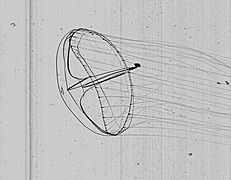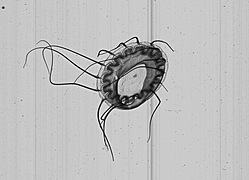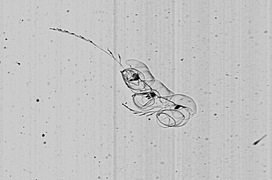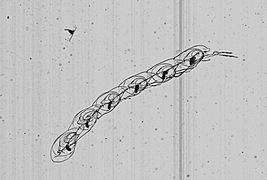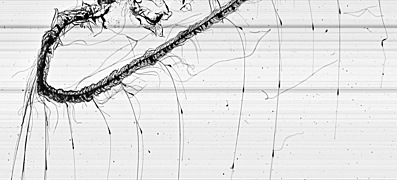A better understanding
by Jessica Luo, on
It’s Sunday, July 28 at 3:30 am and I am starting one of my last night shifts. We have been working in twelve hour shifts, from 3 am to 3 pm, 3 pm to 3 am. Robin and I (Jessica) have been shift partners, and Jean-Olivier and Cédric have been manning the other shift. Between the four of us, we have recorded and watched nearly 15 terabytes of ISIIS images, accounting to a total of nearly 100 hours of black and white pictures flying by the screen at 1/14th of a second a piece.
This is my first ISIIS cruise since the summer of 2011, when the Cowen Lab did a series of cruises in the Gulf of Mexico (some of the data for my PhD) and this one has definitely been one of the most enjoyable cruises I’ve participated in. Part of it has been the effortless camaraderie of the four of us and the ease of working together, part of it has been the inherent scientific interest of this project, with its different components (lagrangian studies, diel vertical migration studies, plankton in mesoscale frontal features).
A third and rather large component of why it has been such a fun cruise is something I didn’t know to expect but now make total sense. As I have progressed along in my PhD studies and delved deeply into the ecology of gelatinous zooplankton (and have looked at hundreds of thousands of ISIIS images along the way), I have developed an instinct for, understanding of, and expertise in many of the organisms that are zooming across the screen in milliseconds. Thus, when I see a bunch of large Prayid (likely Lilyopsis spp.) siphonophores at 100 m, Mertensid ctenophores casting a sticky thin web of tentacles, or a huge surface patch of doliolids, I not only know what I’m seeing (finally!) but also am starting to register in my head why they are in certain places, or in particular orientations in the water column. It’s been really neat for me, as I sit here taking notes on ISIIS images as we collect them, to be able to think beyond the "what is that dark blob over there?" and consider the ecology and behavior of these underappreciated organisms, for we are seeing them in an unprecedented manner. To be able to observe fine-scale patterns and patches (some of these organisms occur in patches just 1-2 meters high) has been fascinating and incredible for me. On this cruise, in the middle of the Mediterranean, I truly feel like I’m "eavesdropping" on the secret lives of these sea drifters.
Here are a few images we captured, most of them taken straight out of ISIIS, some cropped and zoomed. Remember that those are taken in situ, at 4 knots, at the rate of 14 images per second!
